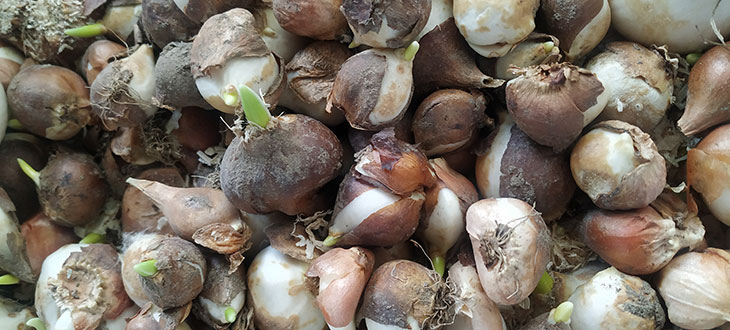10 Plants With True Bulbs
Are you looking for plants with bulbs? Here is a list of plants that use true bulbs to store food during their dormancy period.
Plants have various survival mechanisms. To be able to endure the cold season, some of them enter a dormancy period and store nutrients and substances necessary for new growth in special structures called “bulbs.”
A bulb is a modified stem with fleshy leaves or leaf bases that serves as a food storage organ during the plant’s dormancy period.
There are several types of such nutrient storage organs used by plants, such as:
- True bulbs
- Corms
- Rhizomes
- Tubers
- Tuberous roots
Botanically, and structurally, there are some differences between these, but sometimes, in the common language, the term “bulb” is interchangeably used to refer to any of them.
Below is a list of several plant species with true bulbs.
Contents
1. Onions
Onion is a biennial plant of the genus Allium. It is one of the oldest cultivated plants, being used both as a vegetable in various dishes and salads, as a spice, and also in natural medicine thanks to its antimicrobial properties.
All parts of the onion plants are edible, including the green leaves, flower stalks, flowers, and seeds. However, onion is cultivated particularly for its bulbs.
The easiest way to grow onions is from sets, which are nothing more than immature bulbs.
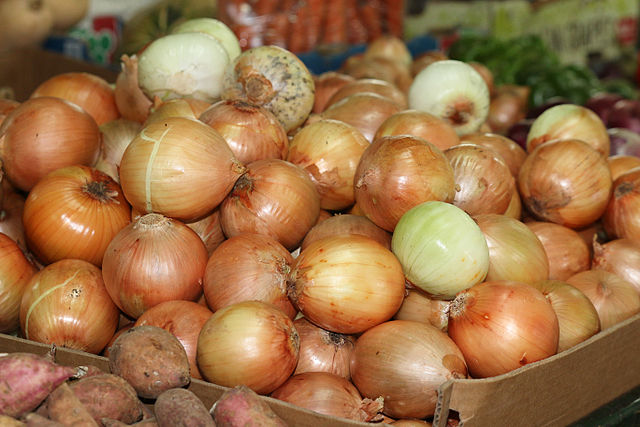
Although onion cultivation from seeds or seedlings is also practiced, onions obtained from sets grow healthier and reach maturity earlier.
The core of a mature onion bulb is made of multiple layers of fleshy modified leaves. These are wrapped and protected on the outside by a thin coating of membranous leaves.
Depending on the cultivar, onion bulbs can be of various colors. Among the most common are white, red, and yellow.
2. Garlic
Garlic (Allium sativum) is an edible plant commonly grown in gardens and frequently used in the kitchen to season food due to its pungent taste.
Like onions, garlic has been used in traditional medicine for centuries for its rich content of vitamins and minerals and its compounds that can strengthen the immune system, as well as for its antibacterial, anti-inflammatory, and antifungal properties.
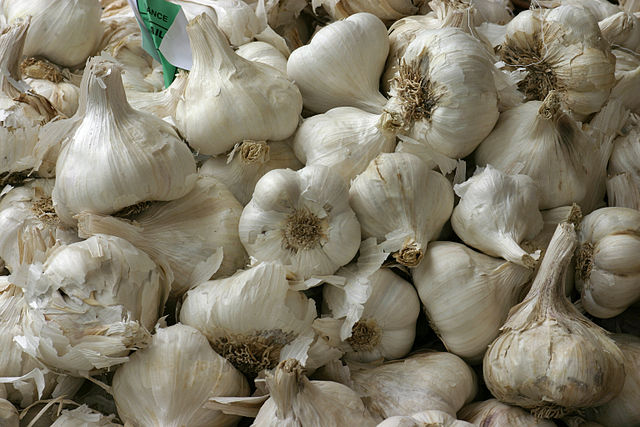
While garlic is mostly grown for its underground bulbs, other parts like the green leaves, scapes (flower stalks), flowers, and seeds are also edible.
The mature bulb of the garlic plant is composed of several pieces packed together, called cloves, each being wrapped individually with a thin skin. The cloves are kept together and protected collectively by a delicate outer membrane.
Although it can be grown from seed, the fastest and most effective way to grow garlic is by planting cloves.
3. Common Snowdrop (Galanthus Nivalis)
Common snowdrop (Galanthus nivalis) is among the first flowering plants to bloom in spring.
Snowdrops are hardy bulbs that can even emerge through thin snow layers in the spring when planted outside. They are seen as heralds of spring and mark the end of winter.
Galanthus nivalis is commonly grown as an ornamental garden plant in Europe, in pots, as a cut flower, and is also found growing wildly in woodlands, grasslands, and pastures.

Snowdrops develop from small, dark brown bulbs. Each bulb grows a floral stem which will carry the white, bell-shaped flower in the upper part and two or more narrow, linear leaves.
The propagation of this plant can be done both by bulb division and through seeds.
4. Hyacinths
Hyacinths are bulbous perennial flowering plants, grown both in the garden and in pots. They are valued for the perfume of their flowers, but also because they can give a vivid look to any garden through the variety of their colors.
Hyacinthus plants grow from bulbs. They have a spherical shape and at maturity, they can reach a diameter between 4.7-3.1 in (12-18 cm).
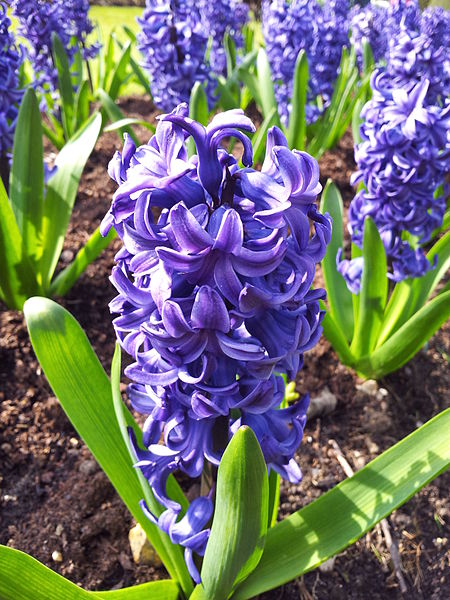
Outside, the hyacinth bulbs are planted in the fall. The best time is between late September to early November and they should be flowering in the months of March-April.
Bulbs can also be planted in pots in October if you wish to get them flowering in early spring. This approach is generally used by florists to make the hyacinth plants bloom faster, but it requires some special steps.
The flowers produced by hyacinths can have various colors such as white, purple, blue, pink, orange, red, yellow, and orange.
5. Tulips
Tulips are some of the most beautiful spring flowers. Through their vivid colors and large blooms, they give color and freshness to any garden.
There are about 150 known species of tulips around the world and more than 3,000 different varieties.

Tulips are perennial bulbiferous plants. Their above-ground parts die after flowering and come back in the next season. During the dormancy period, they store the nutrients needed to grow again in underground bulbs.
The tulip bulbs are planted in mid to late fall so they germinate over the winter and emerge in the spring. Flowering takes place starting in April, for the earliest varieties, and continuing until June. More info about planting tulip bulbs here.
6. Daffodils
Daffodils are among the first flowers to appear in spring. They are perennial bulbous plants that generally produce yellow or white flowers (there are also orange and pink varieties).
They are frequently grown as ornamental garden plants and also used as cut flowers in bouquets and interior floral arrangements.
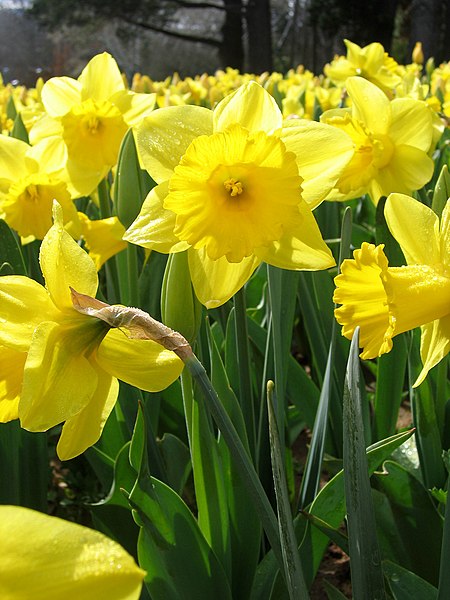
Depending on climate and variety, daffodils start to bloom in late winter or early spring. You may also see them blooming in December when grown in greenhouses.
After the flowering season, their foliage and above-ground parts die back and the plants become dormant until the next growing season.
The bulbs of daffodils are brown-skinned and have an ovoid shape with pronounced necks.
7. Lilies
Lilies are among the most appreciated garden flowers due to both the beauty of their flowers and their enchanting fragrance.
Their blooming period varies from one species to another and can extend from late spring to fall. The flowers are large and fragrant, and come in a variety of colors like white, red, yellow, purple, orange, and pink.
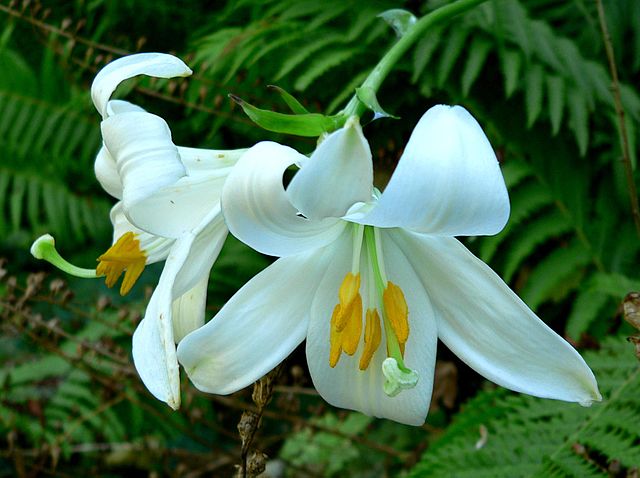
Like the other plants mentioned in this article, lilies grow from bulbs and after flowering, they enter a period of dormancy until the next growing season.
In most regions, the best time to plant lily bulbs is in the fall. They can also be planted in early spring.
8. Wild Garlic (Allium Ursinum)
Wild garlic (Allium ursinum) is a bulbous perennial plant native to Eurasia where is frequently found growing wildly in deciduous woodlands with moist soils.
This wild plant has a taste similar to the garlic cultivated in gardens and has been used for centuries as an alternative to it.

Although garden garlic is well-known to contain various compounds good for the human body, from this standpoint, the wild garlic is even more potent. It contains minerals and other substances in significantly higher amounts than the common garlic species.
The bulbs of Allium ursinum are edible. They have a white color and an elongated, elliptical shape. The leaves and flowers of the plant are edible as well.
9. Grass Lily (Ornithogalum Umbellatum)
Grass Lily (Ornithogalum umbellatum) is a perennial bulbous flowering plant native to Europe, and north-western Africa. It is also commonly known as the garden star of Bethlehem, nap-at-noon, or eleven-o’clock lady.
While it is typically grown as an ornamental plant, in some regions it has escaped cultivation and is often regarded as a weed.

Like other bulbous plants, the grass lily dies back after flowering and stores the food necessary for new growth in an underground bulb. This storage organ is ovoid, brownish-white, and protected by a membrane on the outside.
The edibility of this plant is not precisely known. Some sources claim that some parts of this plant are edible, while others say that they are potentially poisonous.
10. Amaryllis
Amaryllis is a small genus of flowering plants that includes only two species, Amaryllis belladonna and Amaryllis paradisicola.
Amaryllis are bulbous plants with bulbs reaching large sizes at maturity. Every bulb produces between 1 and 3 stalks, each of which bears at the top a cluster of 2 to 12 funnel-shaped flowers (similar in appearance to lilies).

Amaryllis typically produce flowers between late winter and mid-spring, but oftentimes they are forced to bloom earlier in winter by florists.
The bulbs of this plant are generally planted in containers, but in warm climates, they can also be cultivated outside.
Final Word
Bulbs are efficient plant storage organs that enable them to survive during dormancy and provide them with enough energy to give birth to new plants in the next growing season.
These are only a few fairly common plant species that grow from true bulbs. Apart from this category, there are many other plants that use similar storage organs like rhizomes, tubers, corms, or tuberous roots.

